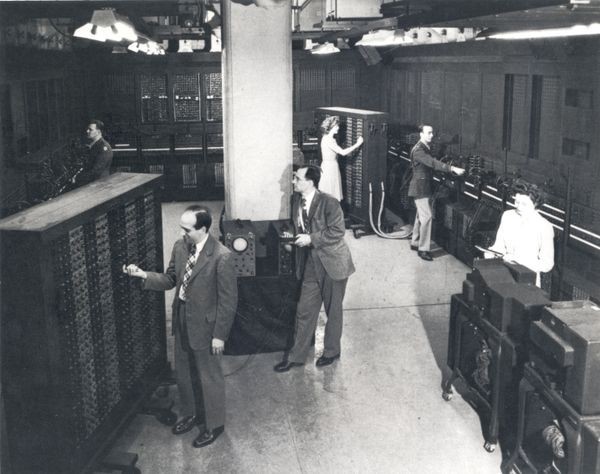History of AI¶

It was in the 1940s when the first manually operated computer system, ENIAC (Electronic Numerical Integrator and Computer), was invented. At that time the word “computer” was being used as a name for a human with intensive numerical computation capabilities, so, ENIAC was called a numerical computing machine! Well, you may say it has nothing to do with learning?! WRONG, from the beginning the idea was to build a machine able to emulate human thinking and learning.

In the 1950s, we see the first computer game program claiming to be able to beat the checkers world champion. This program helped checkers players a lot in improving their skills! Around the same time, Frank Rosenblatt invented the Perceptron which was a very, very simple classifier but when it was combined in large numbers, in a network, it became a powerful monster. Well, the monster is relative to the time and in that time, it was a real breakthrough. Then we see several years of stagnation of the neural network field due to its difficulties in solving certain problems.
Thanks to statistics, machine learning became very famous in the 1990s. The intersection of computer science and statistics gave birth to probabilistic approaches in AI. This shifted the field further toward data-driven approaches. Having large-scale data available, scientists started to build intelligent systems that were able to analyze and learn from large amounts of data. As a highlight, IBM’s Deep Blue system beat the world champion of chess, the grand-master Garry Kasparov. Yeah, I know Kasparov accused IBM of cheating, but this is a piece of history now and Deep Blue is resting peacefully in a museum.
